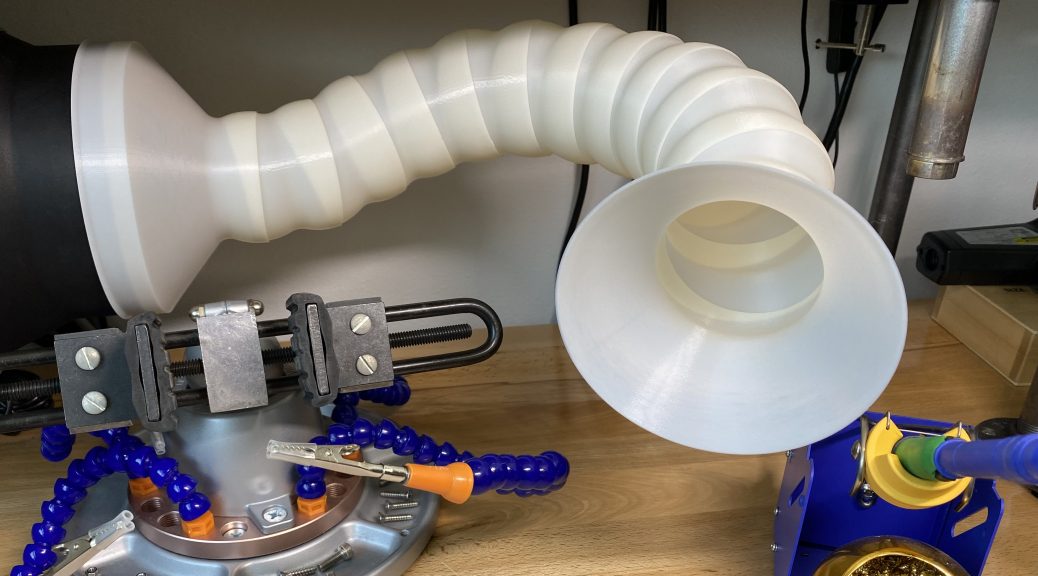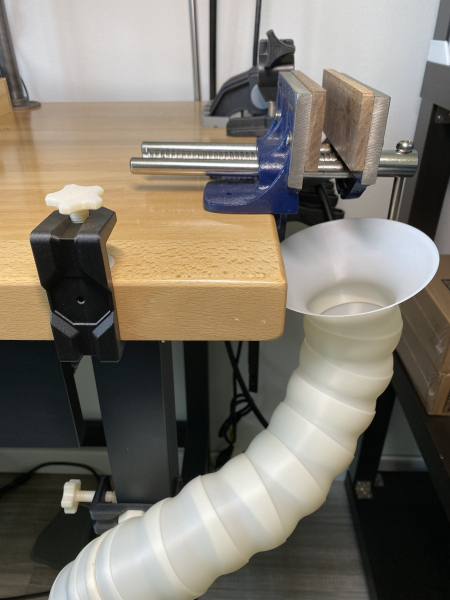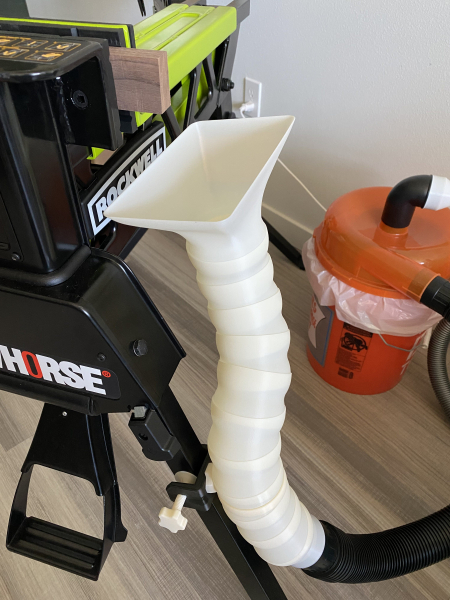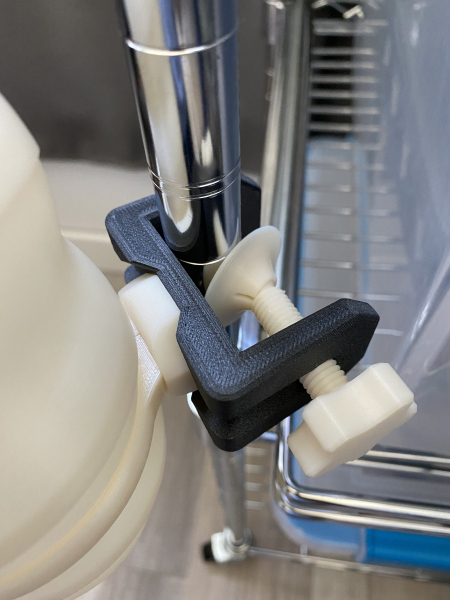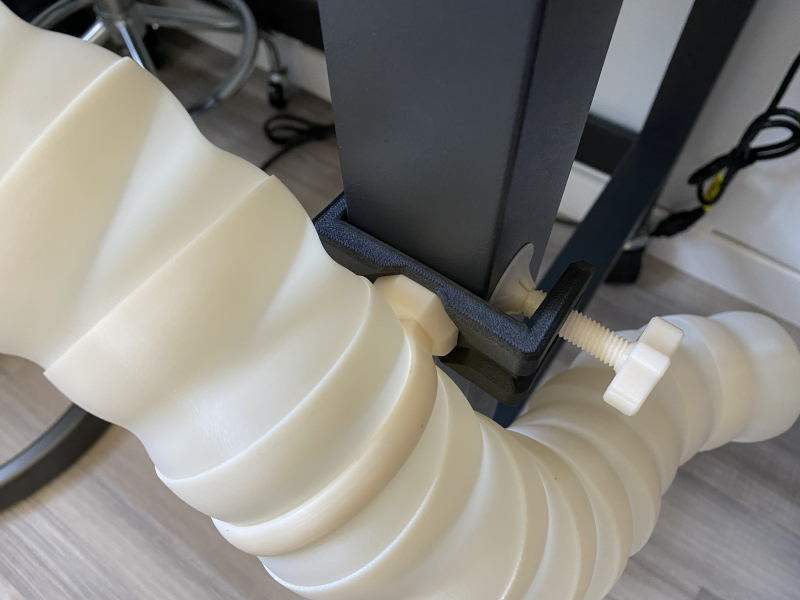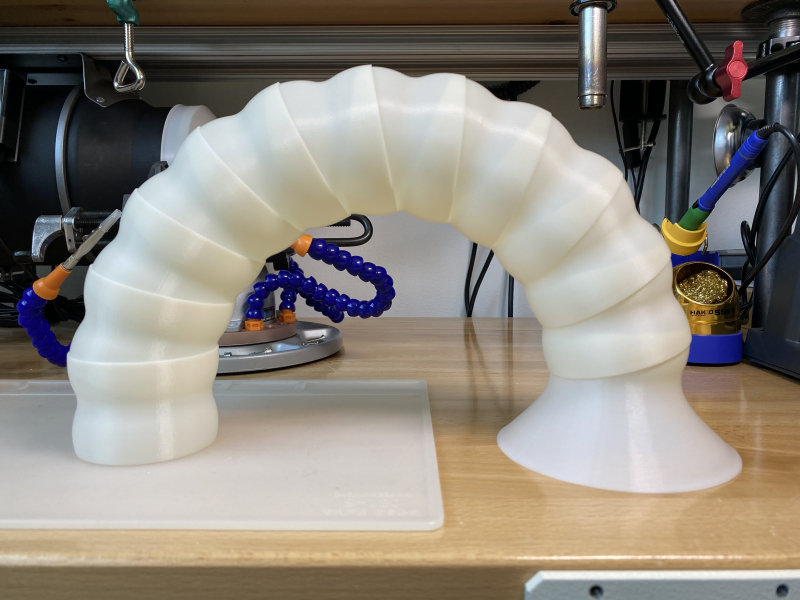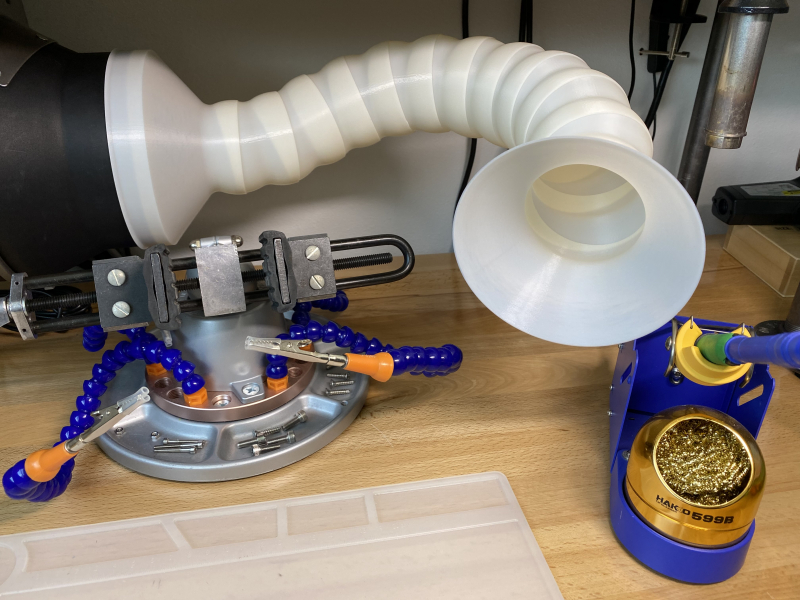Design files for this project can be found here
Here is a 3D printable segmented hose design with a number of different options for adapters, nozzles, and mounts. Hose components were designed to be printed in vase mode to ensure a good seal between each segment. The design itself is also mostly parametric, enabling easy scaling and other tweaks for various applications.
The hose itself is capable of 90° bends with 6 segments and has a minimum bend radius of approx 5in (125mm). Each segment adds approx 1.5in (35mm) to the hose length. Included adapters connect the segmented hose up to standard 2.5in vacuum hoses, or to 6″ inline duct fans. The ends were also designed such that air flows from the wider end to the narrower end of each segment to reduce the chance of dust getting trapped in between segments.
Each individual segment weighs 13g and takes ~23 minutes to print. Roughly 15 unsupported segments (~50cm) can be chained before it starts sagging, but tweaking print settings for a tighter fit will allow for longer unsupported lengths. The CAD model of the Loc-Line 2.5in Vacuum Hose System was used as reference in my design, so it should be compatible with the Loc-Line one. No guarantees though.
Vase mode print results vary from printer to printer, but I have found great success with a 0.4mm nozzle, layer height of 0.15mm, and 1mm external parameter width. The nice thing about vase prints is that tolerances can be easily adjusted by tweaking the extrusion width value. Increasing the width adds more fiction between each part, making it harder to separate individual segments and allowing the hose to support more weight. Printing from an SD card is also highly recommended, as it’s well known that the Einsy board does not have sufficient buffering for high bandwidth (vase) prints.
The clamp mount is made up of five pieces and requires 3× M3 nuts, 2× M3 10mm screw, and 1× M3 8mm screw for assembly. The design is mostly parametric as well, so the neck size, screw length, and inward angle of the arms can be easily customized for any given scenario. The clamp’s c-frame was the only part that I didn’t print out of my usual choice of Prusament PC Blend, instead opting for 3DXTECH’s CarbonX PC+CF for the extra stiffness (flexural modulus of 2.1GPa vs 5.9GPa, which is still an order of magnitude lower than aluminum’s 69GPa).
